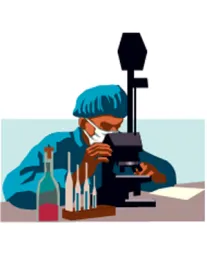While the 21st Century Cures initiative could bring significant legislative changes, questions remain. Stakeholders in any phase of the biomedical innovation cycle should stay apprised of the initiative’s progress and actively provide feedback.
On April 30, 2014, House Energy and Commerce Committee Chairman Fred Upton (R-MI) and Member Diana DeGette (D-CO) launched the “21st Century Cures” initiative, a comprehensive examination of, and response to, perceived roadblocks to medical innovation and development of new disease therapies and treatments. Since then, the two leaders and other committee members have conducted numerous hearings and roundtables, and now are preparing legislation to advance in the next Congress.
Current Challenges and Initiative Goals
Medical innovation in pharmaceuticals, biologicals and medical devices has had a profound impact on health in the United States, as well as the country’s economic well-being. In the last 25 years alone, medical advancements have led to the cure or eradication of historically devastating diseases and the treatment and effective management of many others. While there has been significant progress against diseases in the United States, lawmakers believe that a few key challenges, including the following, are slowing further progress:
-
Decline in research and development investment in biomedical innovation
-
Regulatory uncertainty and regulatory challenges that hinder innovation
To address these challenges, the leaders of the 21st Century Cures initiative are looking holistically at the discovery, development and delivery of new treatments. The goals of the initiative are three-fold:
-
Accelerating the pace of innovation across all three phases
-
Securing the U.S. position as the “owner” of the innovation cycle
-
Facilitating economic growth
Process
Since the initiative’s launch last spring, the leaders and other participants from the committee have held more than a dozen hearings and roundtable discussions across the United States. They have heard from government agencies and advisors (including the U.S. Food and Drug Administration and National Institutes of Health), life sciences companies, trade associations (including the Biotechnology Industry Association, Pharmaceutical Research and Manufacturers of America and Healthcare Information and Management Systems Society), investors, providers and patient groups. The last roundtable was held on September 10, 2014.

Once the review is complete, the committee will begin drafting legislation. At a hearing earlier in fall 2014, Upton stated, “[W]e intend to release a Cures legislative discussion draft in early January 2015 and will look to swiftly move the legislation early in the next Congress.”
Potential legislation is likely to focus on a few key areas, including the following:
-
Review and approval/process for clinical trials
-
Regulation of health information technology and telemedicine—all under the umbrella of digital health
-
Ways to further encourage investment in biomedical innovations
-
U.S. Food and Drug Administration review and approval of laboratory-developed tests
-
Means of furthering personalized medicine for patients
Questions
The potential legislative effort and changes are substantial, but key questions remain. For example, will the committee draft one comprehensive bill or seek to advance discrete issues in a piecemeal fashion? To what extent will the November 2014 elections affect the initiative and its current momentum? While the information-gathering phase has been bipartisan, will the legislation phase remain collaborative? Will the Senate share interest in advancing changes in these areas? Where will Congress find the money to pay for these changes, including increased investment in biomedical research?
The answers to a few of these questions will become clearer in the next few months, particularly in the first quarter of 2015. For stakeholders in any phase of the biomedical innovation cycle, it is critically important not only to stay apprised of this initiative’s activities and progress, but to be actively involved. Click here for additional details on the 21st Century Cures initiative.




 />i
/>i

